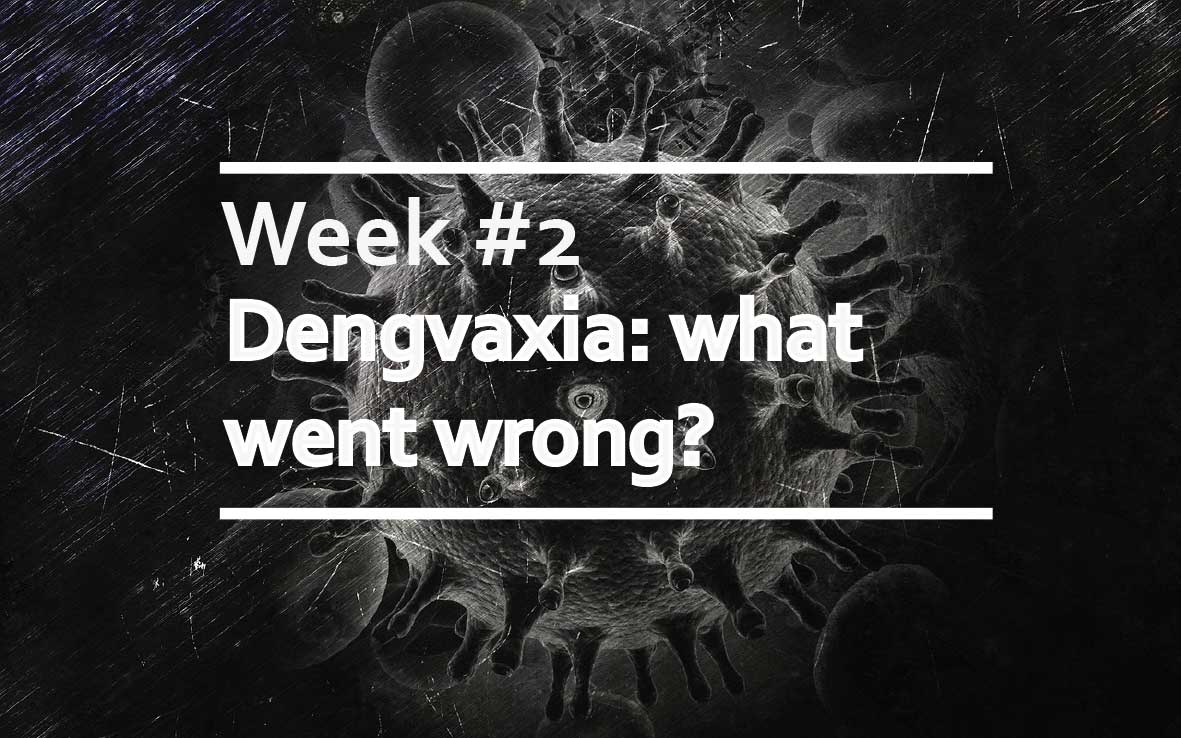Dengvaxia: what went wrong?
Dengue fever is caused by four related but distinct viruses (dengue serotypes 1–4). These serotypes differ in their antigenicity and trigger unique antibody responses. Initial infection with one dengue serotype causes a mild flu-like disease that typically does not require hospitalization. This first infection results in the production of neutralizing antibodies conferring long-lasting protection against the infecting serotype. However, these same antibodies increase a person’s risk of developing ‘severe dengue’ when subsequently infected with any of the other three serotypes. This is known as antibody-dependent enhancement (ADE).
ADE occurs when preexisting, non-neutralising concentrations of antibodies against the initial dengue serotype bind to a subsequent infecting serotype but without sufficient strength to neutralize the virus. Instead, the antibody-virus complex is now more efficient at entering into the host’s target cells bearing the Fc receptor, thus increasing the overall replication of the virus. This phenomenon and other immunological complications – known as original antigenic sin – create serious complications for dengue vaccination efforts, as it now seems to be the case for Dengvaxia, a tetravalent chimeric vaccine against dengue where the envelope proteins of all four different serotypes are expressed in the context of the Yellow Fever 17D vaccine.
In 2015, Hadinegoro and colleagues reported a clinical efficacy of 60% for Dengvaxia against Dengue (http://www.nejm.org/doi/full/10.1056/NEJMoa1506223#t=article). Moreover, compared with those who had not been vaccinated, long-term safety evaluation of Dengvaxia showed significantly fewer hospitalizations in vaccinated people > 9-years-old. These analyses were used as evidence for the licensing of Dangvaxia for the prevention of dengue in 19 endemic countries. While WHO recommended the vaccine for highly endemic countries (defined as seropositivity in more than 50% of people aged between 9 and 45), age was the only declared restriction for vaccine recommendation.
Unfortunately, recent data have identified potential dangers associated with the Dangvaxia vaccination programs. In early December 2017, Sanofi reported that vaccination of children with no previous infection (seronegative) might mimic an initial dengue infection, thereby creating the potential for ADE upon subsequent infections. In fact, vaccine protection is incomplete and has different efficiencies against each of the four serotypes. Therefore, a subsequent natural infection later in life might induce ADE, causing severe, life-threatening dengue fever.
Indeed, using a combination of modeling and hospital admission data, Aguiar and Stollenwerk (http://www.thelancet.com/journals/laninf/article/PIIS1473-3099(17)30752-1/fulltext) found that the serostatus at the time of vaccination is a much more important risk factor for dengue-related admission to hospital than age. In fact, the higher risk of severe dengue associated with young age appears to be due to the negative serostatus.
While these concerns have been voiced for a while, Dans et al. (http://www.sciencedirect.com/science/article/pii/S0895435617309721?via%3Dihub ) recently re-visited Hadinegoro et al.’s meta-analysis and highlighted selective reporting and the use of inappropriate subgroup claims that might have masked the potential harm of dengue mass vaccination programs.
Because vaccine-induced risk in seronegative people had been noted in a phase 3 clinical trial, Aguiar and Stollenwerk argue that vaccination without serostatus testing likely put people at increased risk of a subsequent dengue virus infection.
The development of a dengue vaccine has been an urgent priority for many years, and Sanofi, as well as many other companies, have invested heavily in this challenge. The Dengvaxia scenario is an example of the complexities encountered during vaccine development and the need for careful testing and monitoring of novel vaccines.




